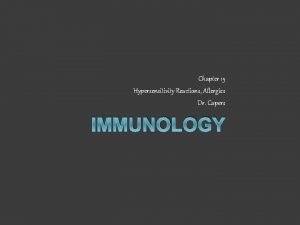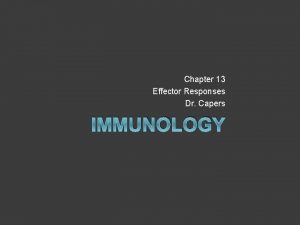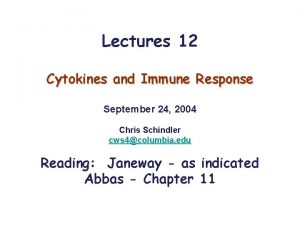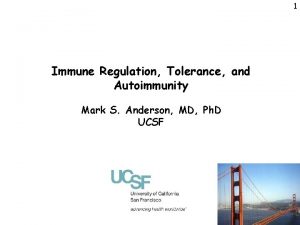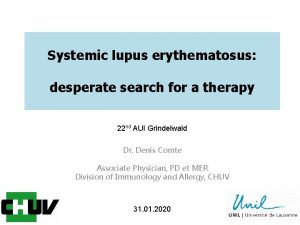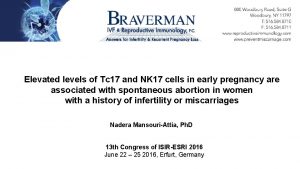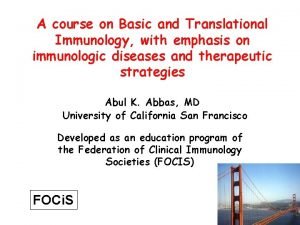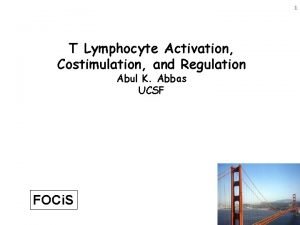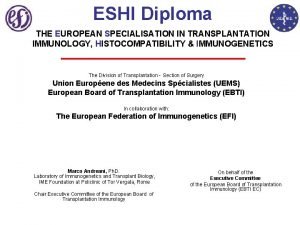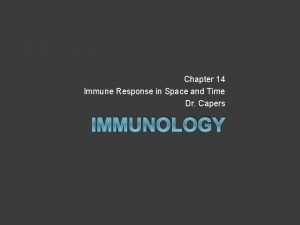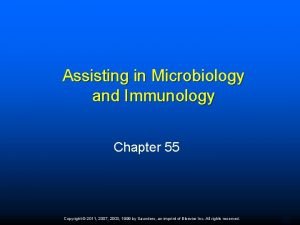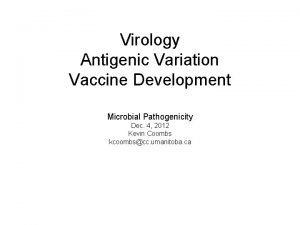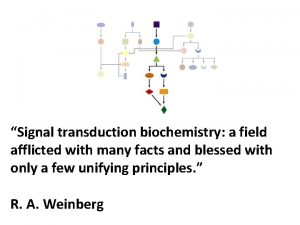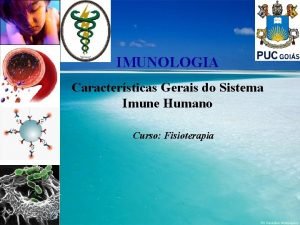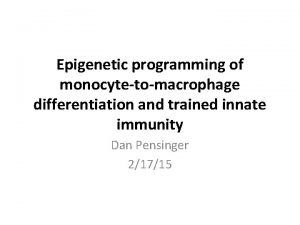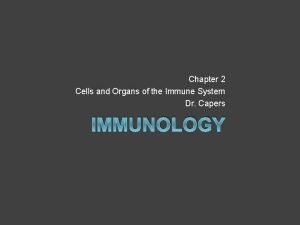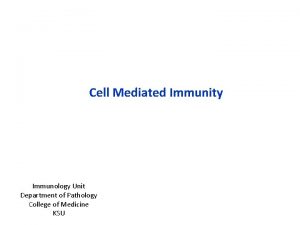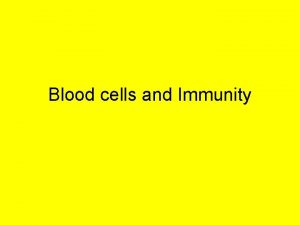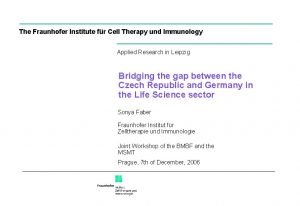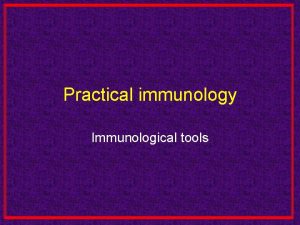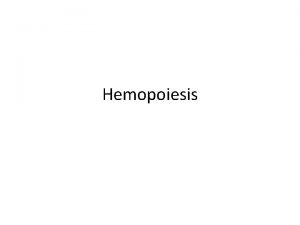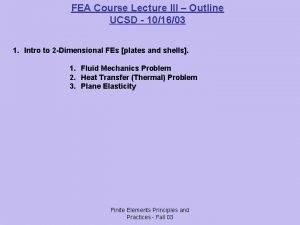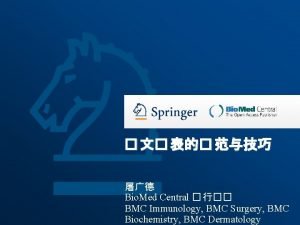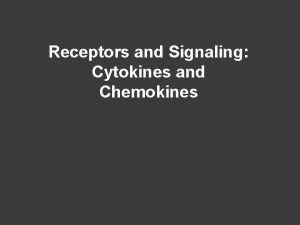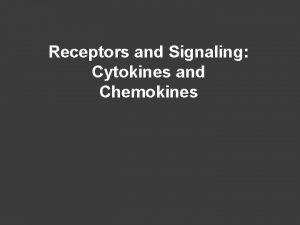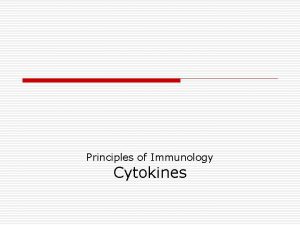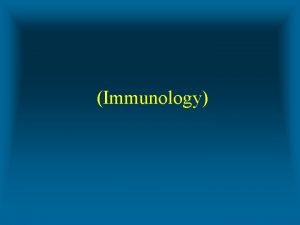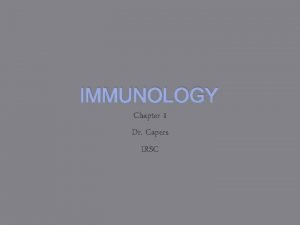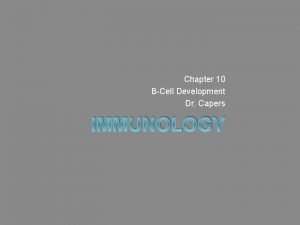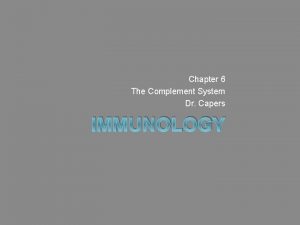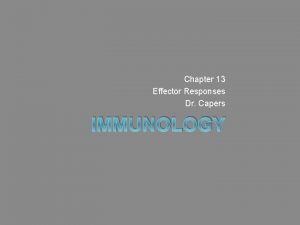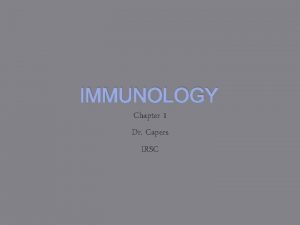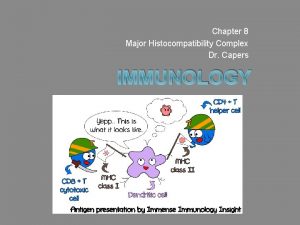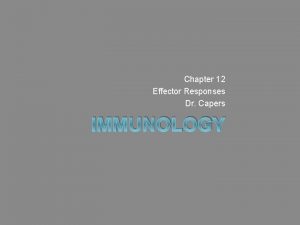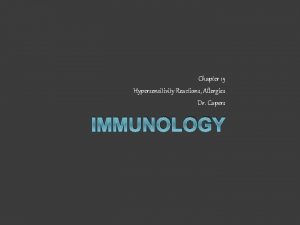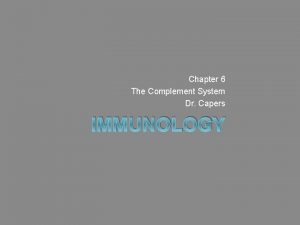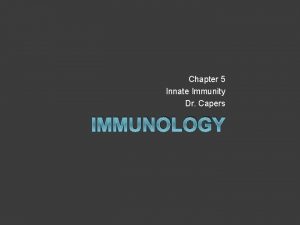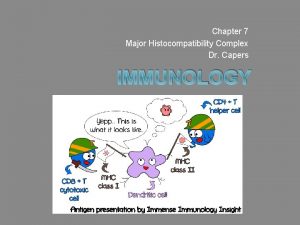Chapter 4 Cytokines Dr Capers IMMUNOLOGY Cytokines Lowmolecular




























- Slides: 28

Chapter 4 Cytokines Dr. Capers IMMUNOLOGY

Cytokines Low-molecular weight regulatory proteins or glycoproteins Secreted by WBC and various other cells This is how they communicate Assist in regulating development of immune effector cells Some possess direct effector functions of their own Some referred to as Interleukins (IL) ○ IL-1 through IL-29 have been described

Chemokines Subpopulation of cytokines Mobilize immune cells from one area to another ○ Help move WBCs into tissues Class of chemoattractants

Cytokines mainly function by autocrine and paracrine action

Cytokines bind to specific receptors Trigger signal transduction pathways that alter gene expression in target cells Exhibit pleiotropy, redundancy, synergy, antagonism, cascade induction


Activity was 1 st recognized in 1960 s Supernatants from in vitro cultures of lymphocytes were found to contain soluble factors Could regulate proliferation, differentiation, maturation of immune cells Purification of these was hampered because of low concentration in culture Gene-cloning techniques changed this – made it possible to produce pure cytokines

ELISA using monoclonal antibodies can be used to detect cytokine presence

Cytokines belong to 6 families ○ Interleukin 1 (IL-1) ○ Hematopoietin family (Class I) ○ Interferon family (Class II) ○ Chemokine family ○ Tumor necrosis family ○ Interleukin 17 (IL-17) Based on structural studies All have molecular mass less than 30 k. Da All have similarities and few rarely act alone

Activities of commonly encountered cytokines, expanded list in Appendix II

Nonspecificity of cytokines conflicts with established specificity of immune system How does this work? ○ Careful expression of the receptors for those cytokines on specific cells ○ Receptors are often only expressed after exposure to antigen

Cytokine Receptors Cytokine receptors fall into families Immunoglobulin superfamily receptors Class I cytokine receptor family (hematopoietin) Class II cytokine receptor family (interferon) TNF receptor family Chemokine receptor family

IL-2 R is the most thoroughly studied cytokine receptor Expressed by T cells for proliferation ○ Also called CD 25, surface marker in mature T cells Complete receptor has 3 subunits – subunits together have higher affinity for IL-2 (see next slide)


Majority of cytokine receptors are in Class I and Class II families ○ IFN-γ was studied because of it’s ability to block viral replication like other interferons - Look on next slide



Cytokine Antagonists Number of proteins can inhibit cytokine activity ○ Can bind to receptor OR ○ Can bind to cytokine, disabling it Enzymatic cleavage of receptors and release of these can bind cytokines in the blood - Marker of chronic T cell activation (transplant rejection, AIDS) Viruses have developed strategies ○ Cytokine homologs ○ Cytokine binding proteins ○ Homologs of cytokine receptors ○ Interference with intracellular signaling ○ Interference with cytokine secretion


CD 4+ TH cells exert most of helper functions through secreted cytokines 2 populations based on secreted cytokines: TH 1 - Cell-mediated functions – delayed hypersensitivity, activation of TC cells, production of opsonizationpromoting Ig. G antibodies TH 2 - Stimulates eosinophil activation, provides help to B cells, promotes production of large amounts of Ig. M, Ig. E, and noncomplement activating Ig. G isotypes - Supports allergic reactions Some TH cells do not show TH 1 or TH 2 profiles

Cytokines produced by TH 1 and TH 2 subsets Promote growth of subset that produces them Inhibit development and activity of other subset Progression of some diseases depends on balance between TH 1 and TH 2

Cytokine Related Diseases SCID Genetic defects in cytokines, their receptors Defective receptor for IFN-γ Susceptible to mycobacterial infections

Cytokine Related Diseases Bacterial Septic Shock Certain Gram- bacteria Symptoms: drop in blood pressure, fever, diarrhea, blood clotting Endotoxins bind TLRs on dendritic cells and macrophages ○ Over-produce IL-1 and TNF-α ○ Cytokine imbalance causes abnormal temp, abnormal respiration, capillary leakage, tissue injury, organ failure ○ Neutralization by monoclonal antibodies may help

Cytokine Related Diseases Bacterial Toxic Shock Superantigens ○ Bind simultaneously to Class II MHC and T cell receptor, activating T cell despite antigenic specificity Symptoms similar to sepsis

Cytokine Related Diseases Abnormalities in production of cytokines or receptors are associated with certain types of cancer Chaga’s Disease Caused by Trypanosoma cruzi Severe immunosuppression ○ Evidence that soluble factor produced by T. cruzi leads to reduction in T cell IL-2 (CD 25) receptor

Cytokine-based Therapies Problems with cytokine therapies: Effective dose levels Short half-life Potent biological response modifiers ○ Can cause unpredictable side effects


Cytokines play essential role in hematopoiesis
 Sensitization hypersensitivity
Sensitization hypersensitivity Dr capers
Dr capers Examples of cytokines
Examples of cytokines Phagocyte
Phagocyte Antigen antibody
Antigen antibody Central tolerance and peripheral tolerance
Central tolerance and peripheral tolerance Lupus
Lupus 17 tc
17 tc Cells
Cells Abbas basic immunology
Abbas basic immunology Immunology diploma
Immunology diploma Pcams immunology
Pcams immunology Assisting in microbiology and immunology
Assisting in microbiology and immunology Nature reviews immunology
Nature reviews immunology Janus kinase
Janus kinase Neutrophil extracellular traps
Neutrophil extracellular traps Molecular immunology ppt
Molecular immunology ppt Trends in education
Trends in education Nature reviews immunology
Nature reviews immunology Pals immunology
Pals immunology Kuby immunology
Kuby immunology Tumor immunology
Tumor immunology Nature reviews immunology
Nature reviews immunology Fraunhofer institute for cell therapy and immunology
Fraunhofer institute for cell therapy and immunology Avidity in immunology
Avidity in immunology Wiki
Wiki Ucsd immunology course
Ucsd immunology course Bmc immunology impact factor
Bmc immunology impact factor American academy of allergy asthma and immunology 2018
American academy of allergy asthma and immunology 2018
